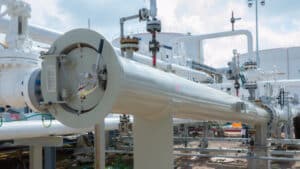When it comes to pipeline maintenance and efficiency, the pigging process stands out as a critical operation within the industry. Although the term may evoke images of farm animals, in the context of the pipeline sector, “pigging” refers to a highly sophisticated procedure essential for the cleaning and inspection of pipelines. SUN Pipeline Solutions in Tulsa, OK, is at the forefront of deploying this technology to ensure the optimal functioning of pipelines. In this blog post, we will take a closer look at the pigging process, breaking down each step to provide a clear understanding of its importance and implementation.

What Is Pigging?
The pigging process involves using devices known as “pigs” to perform various maintenance operations inside the pipelines. These can range from cleaning to inspection and even separating different batches of products within the same pipeline. The term “pig” originated from the squealing sound that the earliest devices made as they moved through the pipeline.
The Purpose of Pigging
Pigging serves several purposes, including:
- Cleaning the Pipeline: Removing built-up deposits, sediments, and other contaminants that can affect the flow of products.
- Inspection and Maintenance: Identifying any potential issues such as corrosion, wear, or damage within the pipeline.
- Separating Products: Enabling the transportation of multiple products through the same pipeline without mixing.
The Pigging Process: A Step-by-Step Overview
Step 1: Planning and Preparation
Before initiating the pigging process, it’s crucial to undertake thorough planning. This involves selecting the appropriate type of pig (cleaning, inspection, or utility), considering the pipeline’s diameter, material, product being transported, and any known conditions within the pipeline.
Step 2: Launching the Pig
The pig is introduced into the pipeline through a launching station, which is specifically designed to insert and retrieve pigs without interrupting the pipeline’s operation. The launching process must be carefully managed to ensure the pig enters the pipeline safely and begins its journey as intended.
Step 3: Pig Propulsion
Once launched, the pig is propelled through the pipeline by the product flow itself, be it oil, gas, or another substance. In some cases, especially for inspection or when the pipeline is dry, an external source such as water or air might be used to move the pig along.
Step 4: Performing the Task
As the pig travels through the pipeline, it performs its designated task. Cleaning pigs scrape and push out debris, whereas inspection pigs (also known as “smart pigs”) use sensors and magnets to collect data on the condition of the pipeline’s interior.
Step 5: Retrieving the Pig
Upon completion of its passage, the pig arrives at a receiving station, where it is safely removed from the pipeline. For cleaning pigs, the debris collected is also removed at this stage. If it was an inspection pig, the data collected is downloaded and analyzed for any signs of damage or wear.
Step 6: Data Analysis and Reporting (For Inspection Pigs)
The information gathered by inspection pigs is thoroughly analyzed by experts to identify any potential issues. Detailed reports are generated, providing valuable insights into the pipeline’s condition and any maintenance or repair actions that may be required.
Step 7: Follow-Up Actions
Based on the findings from the pigging process, necessary maintenance, repair, or cleaning actions are scheduled and undertaken. This ensures the pipeline continues to operate efficiently and safely, minimizing the risk of leaks, contamination, or other operational issues.
Trust SUN Pipeline Solutions for Expert Pigging Services
At SUN Pipeline Solutions in Tulsa, OK, we understand the vital role that pigging plays in maintaining the integrity and efficiency of pipelines. That’s why we offer comprehensive expert pigging services, utilizing state-of-the-art technology and experienced professionals to deliver top-quality results. Contact us today to learn more about our pigging services and how we can help optimize your pipeline operations. Let us be your trusted partner in protecting your assets and ensuring safe and reliable transportation of products.

